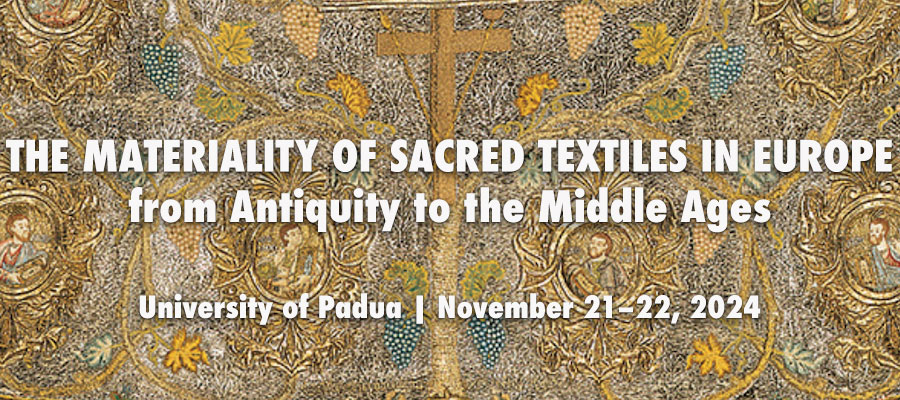The Materiality of Sacred Textiles in Europe, from Antiquity to the Middle Ages, University of Padua, November 21–22, 2024
Since Antiquity, textiles have played a key role in the religious sphere. They formed part of ritual trappings and were used in funerary ceremonials as garments for the deceased or furnishings within churches and shrines, serving the twofold purpose of wrapping bodies and articulating, dividing, and concealing/revealing spaces and objects. Additionally, they were offered as gifts to the divinities or were employed to dress religious images, thus becoming connectors between the sacred and the profane, the private and the public, not to mention their function as embellishment of the bodies of the clergy and the dedicants, as well as the adornment of the altars during the celebration. Last but not least, they were regarded as sacred objects possessing special powers. While often they were produced for the purpose, frequently such textiles were also passed down, patched, reused, and recycled, and thus charged with symbolic meanings, becoming “material memories”.
This conference aims to champion a materiality approach – the notion that the physical properties of a cultural artefact have consequences for how the object is used, worn, and manipulated – to the study of sacred textiles from Antiquity to the Middle Ages. Engaging scholars from different fields and methodological perspectives, the symposium will explore how the understanding of sacred textiles, usually viewed through a strictly disciplinary lens, can be enriched by focusing on the physical structures and raw materials of the objects, and by combining these aspects with ritual and devotional practices, liturgy and the spaces in which it was performed, and the interpretation of written sources.
The language of the conference is English.
